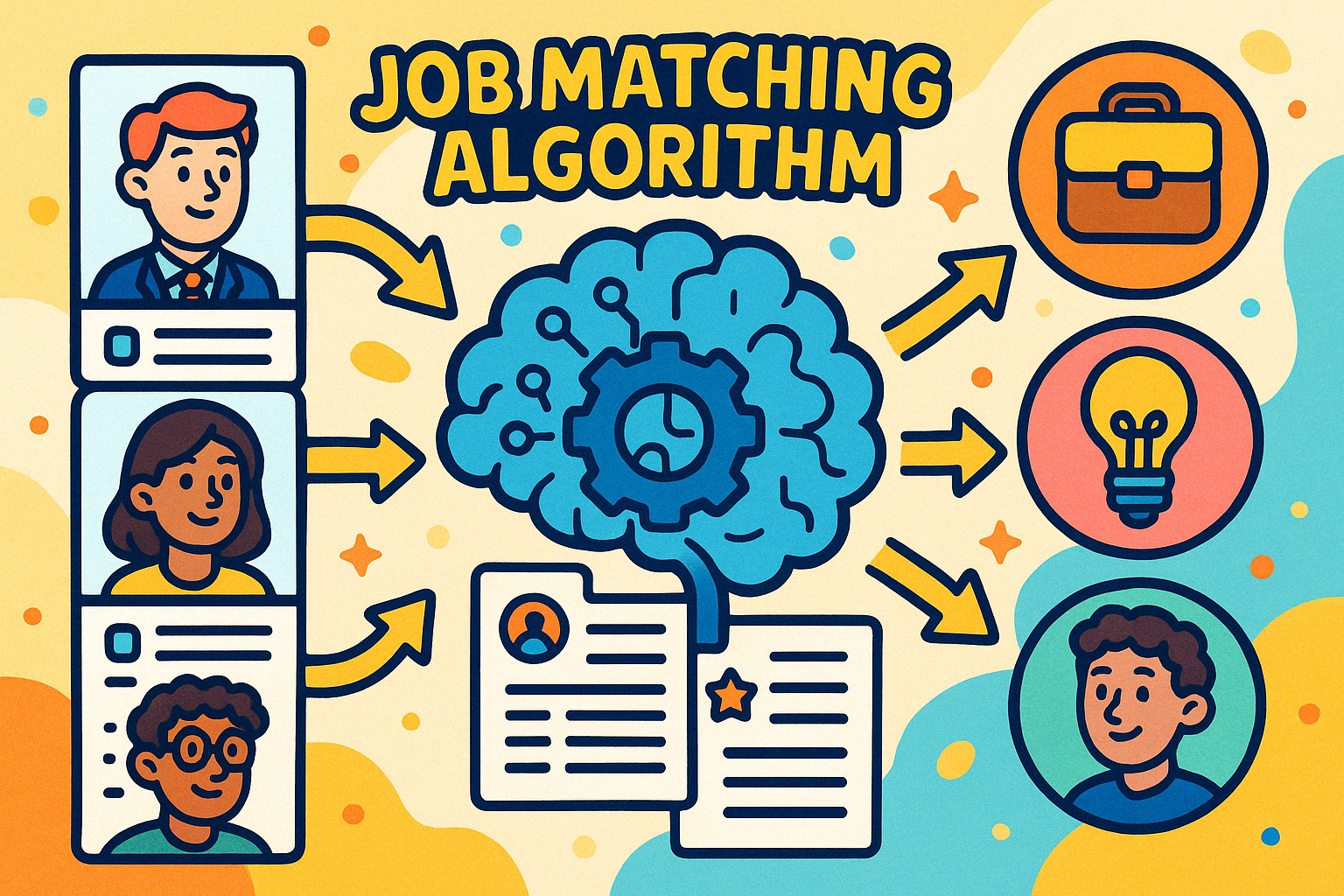Job Matching Algorithms: How AI Is Transforming Talent Acquisition
In today’s competitive job market, finding the right candidate for each opening can be like searching for a needle in a haystack. That’s where job matching algorithms step in—leveraging artificial intelligence and data‑driven techniques to automate and optimize the alignment of candidate profiles with job requirements. This article unpacks what job matching algorithms are, how they work, their key benefits, challenges to watch out for, and emerging trends shaping the future of talent acquisition.
What Is a Job Matching Algorithm?
A job matching algorithm is a software engine—often powered by machine learning or rule‑based logic—that computes a fit score between a job posting and a candidate’s profile. By analyzing structured data (e.g., skills, experience, qualifications) and unstructured data (e.g., résumé text, cover letters), the algorithm ranks candidates in order of relevance, so recruiters can focus on the top‑scoring applicants rather than sifting through hundreds of resumes manually.

How Job Matching Algorithms Work
Data Extraction & Normalization
Parsing Resumes and Job Descriptions: Natural Language Processing (NLP) tools extract key entities such as job titles, skills, certifications, and education.
Standardization: Synonyms (“Java Developer” vs. “Java Engineer”) and varied terminology are mapped to a common taxonomy to ensure consistent comparisons.
Feature Engineering
Keyword Matching: Simple algorithms tally direct keyword overlaps (e.g., “Python,” “project management”).
Semantic Analysis: More advanced models use embeddings or vector representations to gauge conceptual similarity—identifying, for example, that “data wrangling” and “data cleansing” are closely related.
Scoring & Ranking
Weighted Scoring: Different factors (years of experience, skill match, education level) are assigned weights based on their importance for the role.
Composite Fit Score: The algorithm aggregates these weighted factors into a single fit score, then sorts candidates from highest to lowest.
Continuous Learning
Feedback Loops: Recruiter actions (moves to interview, rejections) feed back into the model, allowing it to refine weights and improve future matching accuracy.
Key Benefits for Recruiters and Candidates
Speed & Efficiency: Automates initial résumé screening, cutting hours of manual work down to minutes.
Consistency & Objectivity: Applies the same criteria uniformly, reducing human bias in early‑stage filtering.
Proactive Sourcing: Identifies passive or previously overlooked candidates, enabling talent pipelining even before roles open.
Enhanced Candidate Experience: Faster response times and more relevant role suggestions keep candidates engaged.
Implementation Considerations
Quality of Data: Garbage in, garbage out—ensure job descriptions are detailed and candidate profiles are up to date.
Transparency: Communicate to candidates how their data is used; consider offering a brief explanation of match criteria.
Bias Mitigation: Regularly audit the algorithm’s outputs to detect and correct any unintended demographic biases.
Human Oversight: Algorithms should aid—not replace—recruiter judgment. Always review top recommendations manually before moving to interviews.
Common Challenges
Over‑Reliance on Keywords: Simple keyword spill may boost superficially matching but unqualified resumes.
Dynamic Skill Requirements: Rapidly evolving roles (e.g., AI engineering) require constant updates to the skills taxonomy.
Integration with ATS/HRIS: Seamless integration is essential for real‑time matching and workflow automation.
Data Privacy & Compliance: Handling personal data under regulations such as GDPR demands robust consent and security measures.
Future Trends
Deep Semantic Matching: Advances in transformer‑based models (e.g., BERT, GPT) will enable richer understanding of both job and candidate narratives.
Voice & Video Analysis: Extracting cues from interview recordings—such as communication style or sentiment—to further refine fit scores.
Holistic Fit Metrics: Incorporating cultural fit, career aspirations, and potential for growth alongside hard‑skill matching.
Real‑Time Talent Market Signals: Tapping external labor‑market data (salary benchmarks, in‑demand skills) to adjust matching criteria dynamically.
Related HR Glossary Terms
FAQ
Q: Can job matching algorithms eliminate bias entirely?
While they improve consistency, algorithms reflect the data they're trained on. Regular bias audits and diverse training datasets are essential to mitigate—not completely eliminate—bias.
Q: How accurate are these algorithms?
Accuracy varies by implementation. Well‑tuned models can correctly surface top 10% of candidates up to 80% of the time, but human review remains crucial.
Q: Are small businesses able to leverage job matching algorithms?
Yes—many cloud‑based Applicant Tracking Systems (ATS) offer affordable matching modules tailored for SMBs, making advanced recruitment tools accessible without large upfront IT investments.
By combining advanced analytics with recruiter expertise, job matching algorithms are redefining how companies find, evaluate, and engage talent—ultimately accelerating hiring cycles, improving quality of hire, and delivering a more seamless candidate experience.
From recruiting candidates to onboarding new team members, MokaHR gives your company everything you need to be great at hiring.
Subscribe for more information

